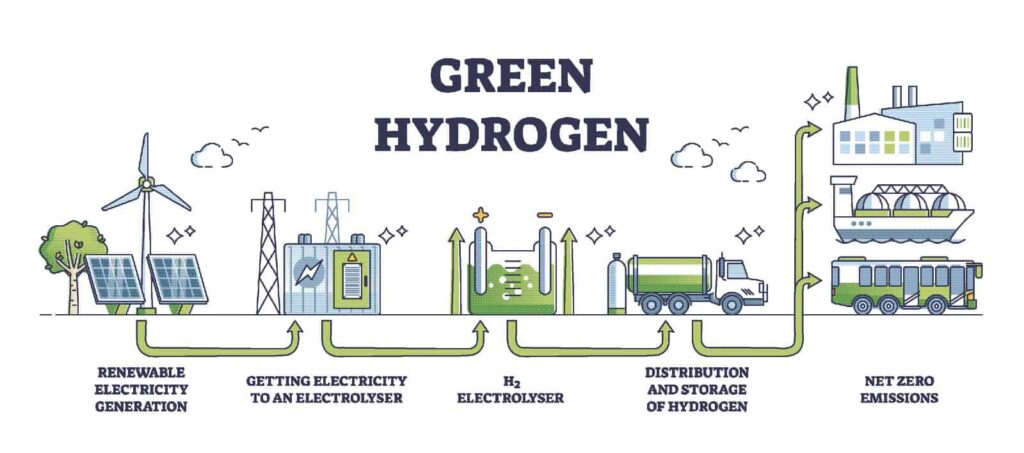India is witnessing an unprecedented surge in renewable energy developments this June 2025, marking a pivotal moment in the country’s quest for sustainable growth. With the government’s ambitious targets, rising investments, and growing public awareness, renewable energy is rapidly transforming India’s power landscape. This blog explores the current trends, challenges, and opportunities driving India’s renewable energy revolution this month.
The Current Renewable Energy Landscape in India
As of mid-2025, India stands as the third-largest renewable energy producer in the world. The country’s total installed renewable energy capacity has crossed 175 GW, comprising solar, wind, hydro, and bioenergy sources. June 2025 marks an important phase where India is accelerating large-scale solar and wind projects, alongside ramping up green hydrogen initiatives.
The government’s commitment to achieving 500 GW of non-fossil fuel capacity by 2030 is gaining strong momentum. Recent policy announcements and financial incentives announced in June have boosted the sector’s growth. These include faster clearances for renewable projects, increased funding for green technologies, and enhanced grid integration plans.
Solar Power: The Brightest Star
Solar energy continues to dominate the renewable sector this June. With abundant sunlight, India’s solar parks and rooftop solar installations are expanding rapidly across states like Rajasthan, Tamil Nadu, Karnataka, and Gujarat. The recent commissioning of some of the largest solar parks has pushed India closer to its solar energy goals.

Moreover, technological advances in solar panel efficiency and battery storage solutions are making solar power more reliable and affordable for both urban and rural consumers. This is enabling millions of households and businesses to switch to clean energy, reducing dependence on conventional coal-based power.
Wind Energy: Harnessing the Breeze
Wind energy projects are also picking up pace in June 2025. Coastal states like Tamil Nadu, Maharashtra, and Gujarat have been pioneers in wind power generation. The introduction of offshore wind projects this month marks a new frontier for India, with promising potential to generate gigawatts of clean electricity from sea winds.
Improved turbine technology and better wind mapping have enhanced the efficiency and feasibility of wind farms. The government’s plan to promote hybrid renewable energy parks, combining wind and solar, aims to optimize land use and energy output.
Green Hydrogen: Fueling the Future
One of the most talked-about developments in June 2025 is India’s increasing focus on green hydrogen. Produced by splitting water using renewable electricity, green hydrogen is seen as a clean fuel that can decarbonize hard-to-electrify sectors like steel, cement, and heavy transport.

The government has launched several pilot projects and partnerships to build a green hydrogen economy. Investments from both public and private sectors are flowing into hydrogen production facilities, storage infrastructure, and fuel cell technologies. This new energy vector is expected to create jobs and boost India’s export potential in the coming years.
Challenges on the Path Ahead
While the renewable energy story is promising, challenges remain. Grid stability and energy storage continue to be critical issues. Integrating intermittent solar and wind energy into the national grid requires smart grid solutions and substantial infrastructure upgrades.
Land acquisition and environmental clearances sometimes slow down project execution. Ensuring the affordability of clean energy while maintaining profitability for developers is another balancing act.
Furthermore, the transition needs skilled manpower and robust supply chains for components like solar panels, wind turbines, and batteries. India is working on developing domestic manufacturing capabilities to reduce import dependence and strengthen the renewable ecosystem.
Community Impact and Social Benefits
Renewable energy growth in June 2025 is not just about power numbers; it is transforming lives across India. Rural electrification through solar mini-grids and off-grid solutions is empowering remote communities, improving education, healthcare, and livelihoods.
Job creation in installation, maintenance, and manufacturing is benefiting thousands, especially youth and women in rural areas. Sustainable energy is helping reduce air pollution and improve health outcomes in cities heavily dependent on fossil fuels.
The Road Ahead: A Vision for 2030 and Beyond
India’s renewable energy surge in June 2025 is a vital chapter in the country’s climate action and development narrative. With strong government backing, technological innovation, and growing investor interest, India is on track to meet and possibly exceed its climate commitments under the Paris Agreement.
Efforts to expand electric vehicle adoption, energy efficiency, and smart city projects will complement renewable energy growth. Collaborations with global partners on clean energy research and financing will further accelerate progress.
In conclusion, India’s renewable energy boom this June is more than just a sectoral success story — it is a beacon of hope for a sustainable, prosperous future. As India charges ahead, the world watches closely, inspired by its bold strides toward a greener tomorrow.
Would you like me to tailor this blog for a specific audience or add SEO keywords?
“This Content Sponsored by Buymote Shopping app
BuyMote E-Shopping Application is One of the Online Shopping App
Now Available on Play Store & App Store (Buymote E-Shopping)
Click Below Link and Install Application: https://buymote.shop/links/0f5993744a9213079a6b53e8
Sponsor Content: #buymote #buymoteeshopping #buymoteonline #buymoteshopping #buymoteapplication”

